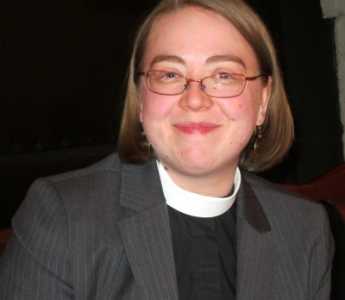Related Topics
West of Broad
A collection of articles about the area west of Broad Street, Philadelphia, Pennsylvania.
Religious Philadelphia
William Penn wanted a colony with religious freedom. A considerable number, if not the majority, of American religious denominations were founded in this city. The main misconception about religious Philadelphia is that it is Quaker-dominated. But the broader misconception is that it is not Quaker-dominated.
Touring Philadelphia's Western Regions
Philadelpia County had two hundred farms in 1950, but is now thickly settled in all directions. Western regions along the Schuylkill are still spread out somewhat; with many historic estates.
Customs, Culture and Traditions (2)
.
Right Angle Club 2011
As long as there is anything to say about Philadelphia, the Right Angle Club will search it out, and say it.
Labyrinth, Episcopalian Version

|
| Reverend Diana Carroll |
The Reverend Diana Carroll, Assistant Rector of Holy Trinity Church on Rittenhouse Square, recently addressed the Right Angle Club about the labyrinth to be found there. The fact is, it is there because she put it there, where it is open to the public on Saturday afternoon a month. There are half a dozen other labyrinths in Philadelphia Churches, mostly forgotten, so this is a revival of a custom rather than the invention of one. St. Asaph's on City Line Avenue, St. Stephen's at 10th and Market and a few others have them, most neglected and forgotten. Reverend Carroll admits to importing the tradition to Holy Trinity, persuading everybody in charge to nurture it, and setting aside one Saturday afternoon for the public to visit each month. Labyrinths differ in their design; this one copies the design within Chartres Cathedral in France. In England, labyrinths are much more popular and have other designs.

|
| Labyrinth |
Contrary to popular belief, a labyrinth only has one entrance, which is also its only exit. The visitor goes in, goes round and round and comes to a dead end, and then goes back out the same way. There's no great problem about getting lost; the confusing puzzles of ancient lore are not labyrinths, they are mazes. Whether with walls or simply lines on the floor, labyrinths are designed for meditation and symbolism. It's possible to bump into other people on the way out, it's possible to be struck by the symbolism of reaching the center of things, it's possible to imagine the human condition of getting into things and then getting yourself out. Diana Carroll says the labyrinth evokes the image of feminism to her, entering or leaving the uterus. That thought might not have occurred to everyone else, but an agreement isn't central to appreciating labyrinths.
The Nazca lines, best seen from an airplane over Chile, evoked the image of labyrinths to several Right Angle members. Those lines are a couple of thousand years old, in a decidedly non-Christian environment at the time. Forty-five centuries B.C. could safely be judged to precede Christianity, so it becomes clear that this concept is discontinuous, popping up in many minds in many circumstances. Some theologians might well contend this proves that meditation labyrinths are therefore not part of any fixed religious doctrine. But others, with equal justice, might say it proves that labyrinths are part of the essential nature of contemplative man. Or as in Reverend Carroll's case, woman.
Originally published: Friday, February 18, 2011; most-recently modified: Wednesday, May 22, 2019